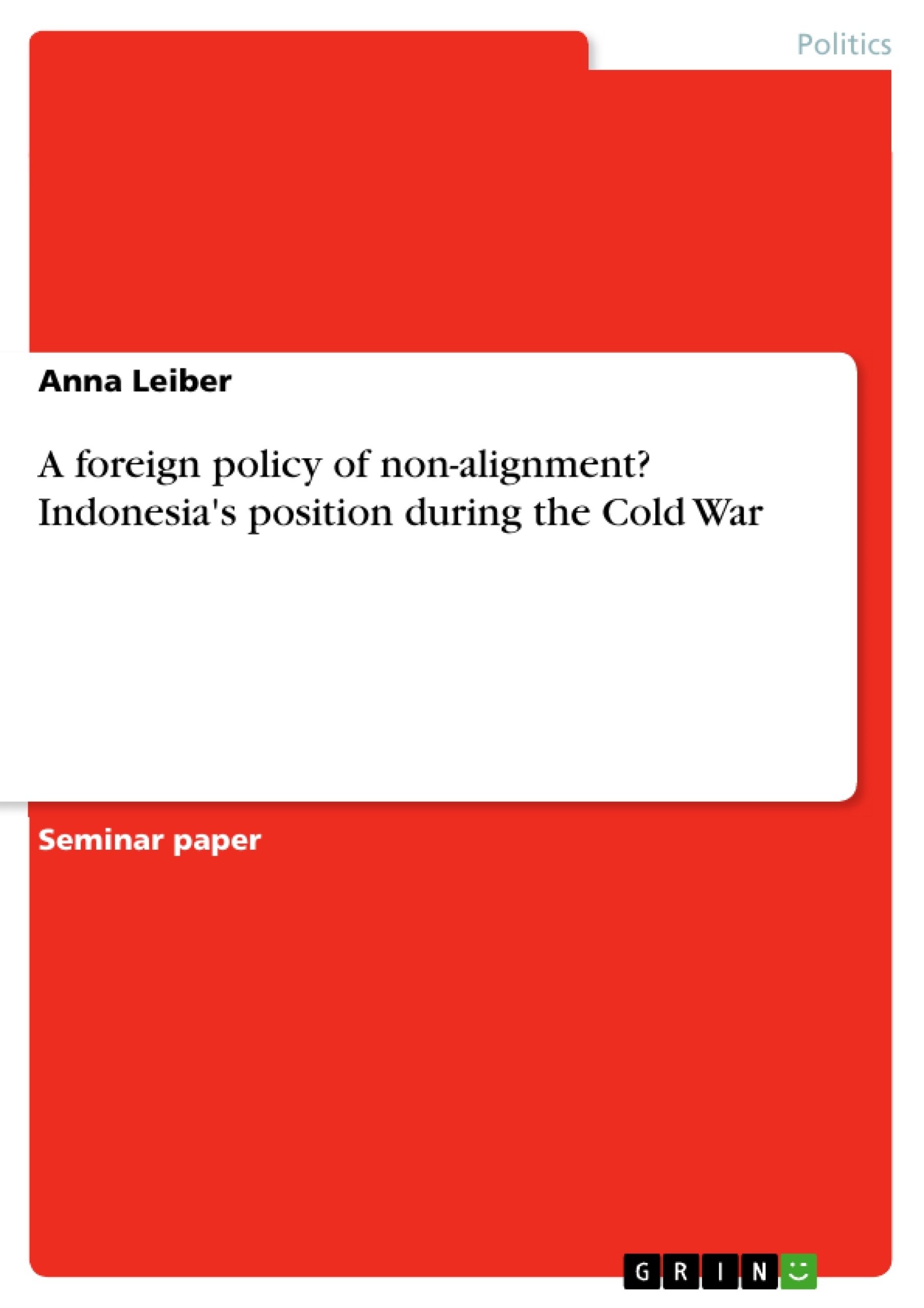During the early years of the Cold War the American as well as the Soviet leaders concentrated their political strategy primarily on the European territory. From the early 1950s onwards, however, their attention shifted towards the Asian and African world. Among the Asian countries, especially the new established Republic of Indonesia was soon considered as a significant strategic control point by both superpowers. Thus, in order to gain this young nation as a political ally, the US as well as the Soviet government continuously offered economic and military support during the next 20 years. Despite all these diplomatic efforts, Indonesia didn’t join any alliance. Following the 1949 proclaimed foreign policy of non-alignment, president Sukarno wanted to uphold a neutral position between the American and Soviet bloc. Until 1965, however, the Indonesian leader played a successful double game with the Cold War opponents through which he tried to benefit as much as possible.
Looking at the period between the end of the Second World War 1945 and Sukarno’s political overthrow in 1965, this paper analyzes two questions. On the one hand, it will focus upon the political attempts coming from the USA and the USSR in order to influence the Indonesian government. On the other hand, by illustrating the latter’s behaviour it will underline that Indonesia took a huge advantage from its triangle position between the American and the Soviet bloc and left the path of foreign neutrality soon after its independence.
Inhaltsverzeichnis (Table of Contents)
- Summary
- Introduction – The Cold War and Southeast Asia
- The Indonesian Non-Alignment Policy put to test.
- Indonesian political situation between 1945 and 1949
- Indonesia between American and Soviet influences (1950-1965)
- The US-Indonesia relations
- The Soviet-Indonesia relations
- Conclusion
Zielsetzung und Themenschwerpunkte (Objectives and Key Themes)
This paper examines Indonesia's foreign policy of non-alignment during the Cold War period (1945-1965). It analyzes the political attempts by the USA and the USSR to influence the Indonesian government and explores how Indonesia strategically benefited from its neutral position.
- The Cold War's impact on Southeast Asia
- Indonesia's pursuit of non-alignment
- The strategic importance of Indonesia for both superpowers
- The economic and military support offered by the USA and the USSR
- Indonesia's ability to leverage its position for its own benefit
Zusammenfassung der Kapitel (Chapter Summaries)
- The summary provides an overview of Indonesia's foreign policy of non-alignment during the Cold War and its strategic importance for both superpowers.
- The introduction discusses the Cold War's impact on Southeast Asia, highlighting the ideological conflict between the United States and the Soviet Union and the role of newly independent nations.
- This chapter examines the challenges faced by Indonesia in maintaining its non-aligned policy amid the Cold War pressures from the USA and the USSR.
- This section focuses on the Indonesian political situation from 1945 to 1949, highlighting the country's early years of independence and its commitment to neutrality.
- This chapter analyzes the relationship between Indonesia and both the USA and the USSR from 1950 to 1965, examining the economic and military support offered by each superpower and Indonesia's strategic maneuvering.
Schlüsselwörter (Keywords)
The key themes of this paper are Indonesia's foreign policy, non-alignment, Cold War, Southeast Asia, USA, USSR, strategic importance, economic support, military support, and political influence.
- Quote paper
- B.A. Anna Leiber (Author), 2014, A foreign policy of non-alignment? Indonesia's position during the Cold War, Munich, GRIN Verlag, https://www.grin.com/document/282696




